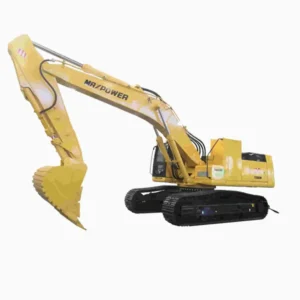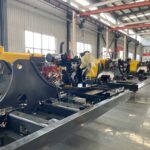Have you been hearing people constantly raving about the 160 excavator lately and wondering what all the fuss is about? Look no further because we’ve got the scoop! This powerful machine has taken the construction industry by storm, offering unparalleled digging capabilities and precision control. Whether you’re a seasoned operator or an interested bystander, this blog post will break down exactly why everyone can’t stop talking about the 160 excavator. So buckle up and get ready to be impressed!
What is an excavator?

An excavator is a construction vehicle used to dig holes, trenches, and foundations. Excavators are also used to move large objects such as rocks or logs. Excavators have a long arm with a bucket on the end. The arm is attached to the body of the excavator with a hinge. The operator sits in the cab of the excavator and controls the arm with levers.
Excavators are very versatile vehicles and can be equipped with a variety of attachments to perform different tasks. For example, excavators can be equipped with hydraulically operated thumbs that allow them to grab and move objects. Some excavators have attachmentsthat allow them to break up concrete or rock.
The many uses of an excavator
An excavator is a construction vehicle that is used for a variety of tasks, including digging, grading, and demolition. Excavators are available in a variety of sizes and can be equipped with a variety of attachments to perform a wide range of tasks.
small excavators are often used in residential construction and landscaping applications, while larger excavators are typically used in commercial and industrial applications. Excavators can be equipped with buckets, thumbs, breakers, shears, and other attachments to facilitate a variety of tasks.
Why the 160 excavator is so popular
The 160 excavator is one of the most popular excavators on the market because it is incredibly versatile and can be used for a variety of construction projects. It has a relatively compact design, which makes it easy to maneuver in tight spaces, and its powerful engine ensures that it can handle even the most challenging tasks. Additionally, the 160 excavator is equipped with a number of features that make it ideal for use in both residential and commercial applications. Some of these features include an advanced operator interface, a generous bucket size, and superior performance levels.
How to use an excavator

If you’re looking to get into the excavating business, or even if you just want to try operating one of these massive machines for fun, you’ll need to know how to use an excavator. Here are a few tips on how to use an excavator:
1. Read the operator’s manual before doing anything. This may seem like a no-brainer, but it’s important to understand all the safety features and controls of the machine before using it.
2. Start the engine and let it warm up before moving the excavator. Once the engine is warmed up, you can start moving the machine by using the joystick controls.
3. Use caution when moving the excavator around. These machines are very powerful and can cause serious damage if not used correctly. Be sure to avoid any power lines or other obstacles when operating the machine.
4. To dig a hole with an excavator, first position the bucket in front of the area where you want to dig. Then, lower the bucket down into the ground and start scooping out dirt and debris.
5. When you’re finished digging, be sure to raise the bucket back up and move the excavator away from the hole before turning off the engine.
Excavator safety tips
When it comes to excavator safety, there are a few key things to keep in mind. First and foremost, always wear your seatbelt when operating the excavator. Additionally, be sure to stay aware of your surroundings and avoid blind spots. When working near power lines, be extra cautious and always maintain a safe distance. Finally, always follow the manufacturer’s safety guidelines when operating the excavator. By following these simple safety tips, you can help prevent accidents and injuries while using this powerful piece of machinery.
Conclusion
The 160 excavator is a versatile and powerful piece of machinery that has been gaining popularity among construction professionals. Its impressive performance, ease of use, and affordability make it the perfect choice for any job. It offers reliable power for tackling tough projects with speed and efficiency. This type of excavator can save you time, money, and energy when completing your project – all without sacrificing quality or safety. So if you’re looking to expand your toolkit or upgrade an existing piece of equipment on the job site, consider investing in a 160 excavator for maximum efficiency.






-150x150.webp)
